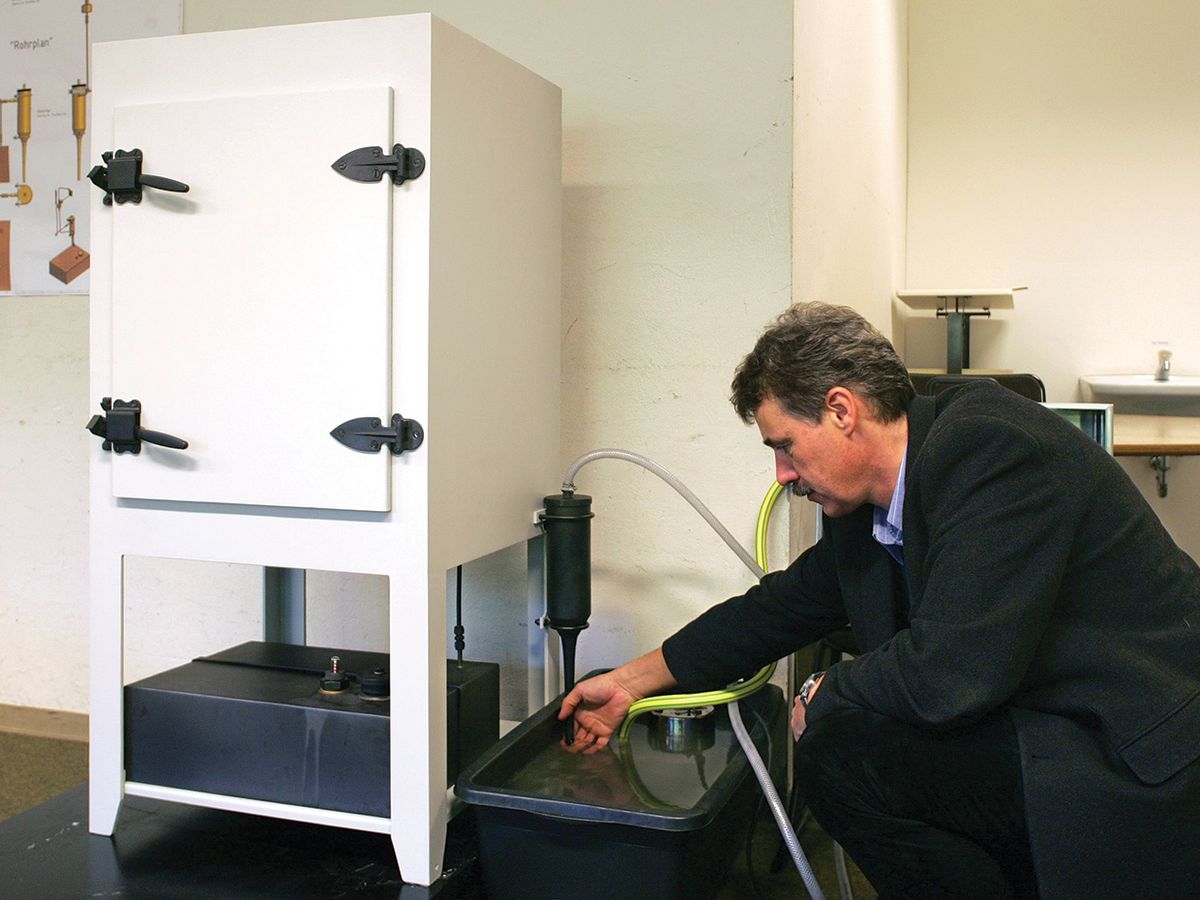Albert Einstein is a legend for his breakthroughs in theoretical physics, but sometimes even the most abstract theorists have a practical side. In collaboration with other scientists and technologists throughout his career, Einstein also filed patents and promoted practical inventions that included a refrigerator, a hearing aid, and a camera.
One retired research scientist has taken a particular interest in Einstein’s forays into engineering: Asis Kumar Chaudhuri, who had worked at the Variable Energy Cyclotron Centre, in Kolkata, India. He’s not the first to note Einstein’s rather mixed record as an inventor, and Chaudhuri acknowledges that none of Einstein’s contributions to technology ranks with E = mc2, but he believes the man’s brilliance—and humanity—still shines through and his inventions deserve to be remembered.
“If you read between the lines and read the stories behind his inventions, you’ll find a sympathetic man,” a human who is troubled by others’ bad fortune, Chaudhuri says.
In 1926, Einstein read a newspaper article about an entire family in Germany that had been killed by a leak from their refrigerator. Refrigerators at the time used lethal gases, such as methyl chloride and sulfur dioxide, as coolants. Einstein reached out to his friend the young Hungarian physicist Leo Szilard (who would later be the first to realize that chain reactions could liberate huge amounts of nuclear energy) to find an alternative.
Einstein and Szilard’s design used a metallic fluid moved back and forth by an electromagnetic pump that eliminated gaskets and seals. Ultimately, Chaudhuri notes, there were 45 patent applications filed for the Einstein-Szilard refrigerator technology in six countries. Yet no commercial product emerged from the flurry of paperwork and prototypes. However, in 2008 the idea was revived as a possible low-maintenance technology for developing markets. And last year a British inventor adapted the Einstein-Szilard design to make an electricity-free refrigerator to keep vaccines cool in hot climates for up to 30 days.
Back in 1928, Einstein continued trying his hand at technology by collaborating with German engineer Rudolf Goldschmidt. Their goal was to develop a hearing aid that could assist Einstein’s friend, the singer Olga Eisner, who had become hard of hearing.
Einstein and Goldschmidt’s idea was to use the magnetorestrictive property of some materials in which a magnetic field alters the shape of the material in a reversible way. In the case of the hearing aid, electrified coils would alter the length of rods and so vibrate a diaphragm to produce sound. The two applied for a patent for this nascent hearing aid technology in 1929. However, they had to abandon their work as the rise of Hitler led both men to flee Germany.
Not long after Einstein arrived in the United States, he struck up a friendship with the doctor who was treating his ailing wife, Elsa, and this led to Einstein’s last major foray into practical invention. Gustav Bucky was a German-American radiologist who had previously invented X-ray blur-reduction technology. In 1935, Bucky and Einstein filed a patent applying the physics that won Einstein his Nobel prize. The proposed Einstein-Bucky camera used the photoelectric effect to automatically adjust the exposure of the film in a camera depending on light levels. Light striking a photoelectric cell would produce a current proportional to the intensity of the light, and this was used to move a screen with regions of varying transparency across the film accordingly. Once again, the invention went nowhere.
Chaudhuri says that despite their commercial failure in Einstein’s lifetime, these inventions provide an important window into understanding the great scientist. “He was really a reasoning man,” Chaudhuri says. “But he was not just a theoretical physicist living in his ivory tower either.”
